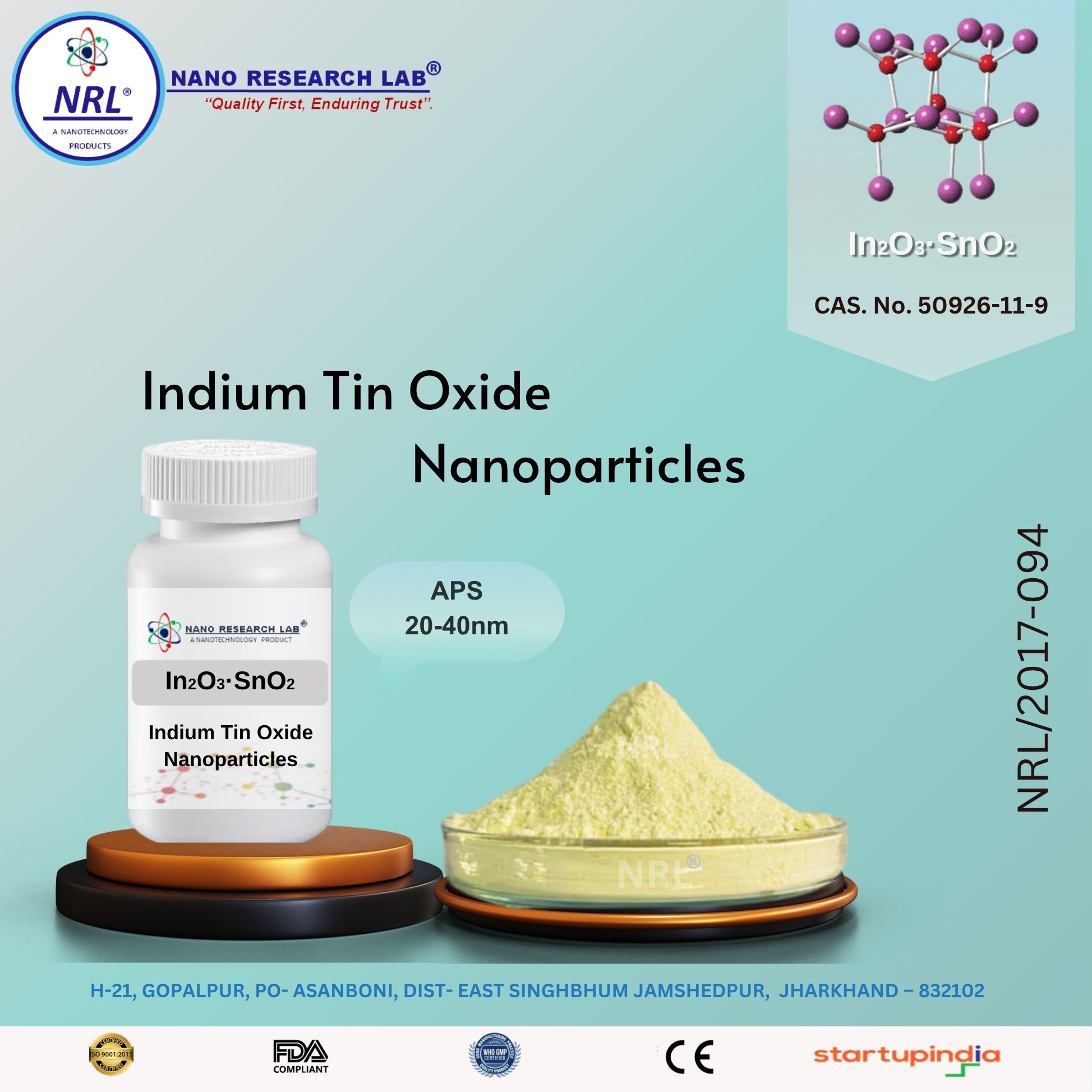
Indium Tin Oxide Nanoparticles/Nanopowder (In2O3:SnO2=90:10Wt%, 20-40nm, purity 99.5%)
₹1475.00
Indium Tin Oxide Nanoparticles / Nanopowder (In₂O₃:SnO₂ = 90:10 wt%, 20–40 nm, Purity 99.5%)
⚙️ Technical Specifications
Property | Specification |
|---|---|
Product Name | Indium Tin Oxide (ITO) Nanoparticles / Nanopowder |
Chemical Formula | In₂O₃:SnO₂ = 90:10 wt% |
Purity | ≥ 99.5% |
Average Particle Size (APS) | 20–40 nm |
Appearance | Yellowish-white fine powder |
Crystal Structure | Cubic (In₂O₃), Rutile (SnO₂ doped) |
Density | ~7.1 g/cm³ |
Electrical Conductivity | Conductive, resistivity ~10⁻⁴–10⁻³ Ω·cm (depending on sintering) |
Transparency | High optical transparency in visible range |
Solubility | Insoluble in water; stable under ambient conditions |
CAS Number | 12068-37-6 (In₂O₃) |
🌟 Key Features
High-purity (99.5%) ITO nanoparticles with 20–40 nm particle size
Excellent electrical conductivity and optical transparency
High surface area for thin-film and coating applications
Thermally and chemically stable
Non-toxic and suitable for electronics, optoelectronics, and research applications
🔬 Applications (in Detail)
1. Transparent Conductive Films
Used in touchscreens, LCDs, OLED displays, and photovoltaics
Provides high conductivity while maintaining optical transparency
2. Sensors & Electronics
Utilized in gas sensors, electrochromic devices, and MEMS/NEMS applications
High surface area nanoparticles improve sensitivity and response time
3. Coatings & Thin Films
Suitable for sputtering, screen-printing, and sol-gel deposition
Forms uniform, conductive, and transparent coatings on glass and polymer substrates
4. Catalysis
Acts as a catalyst or catalyst support in chemical reactions and fuel cell electrodes
Nanoparticles enhance surface reactivity and electron transfer
5. Research & Nanotechnology
Ideal for optoelectronics, conductive coatings, and nanomaterial studies
Enables functionalization for hybrid materials and composites
⚠️ Handling & Storage
Store in a sealed, dry container, away from moisture and strong acids
Handle with gloves, mask, and eye protection to prevent nanoparticle inhalation
Stable under ambient and laboratory conditions
Avoid prolonged exposure to high temperatures beyond decomposition point
